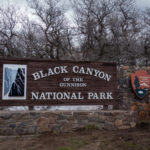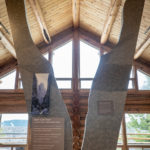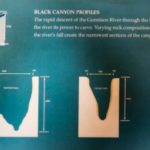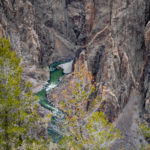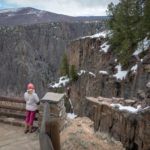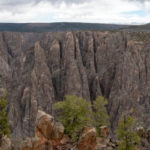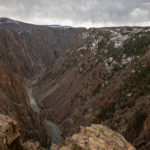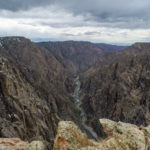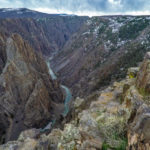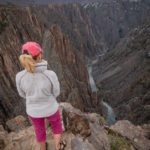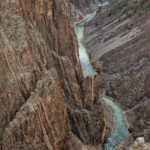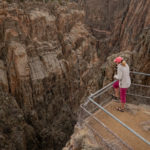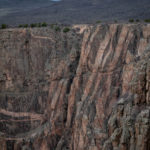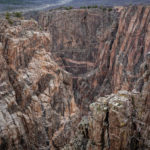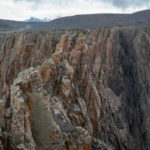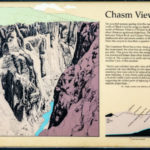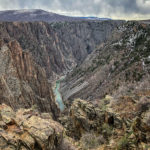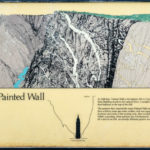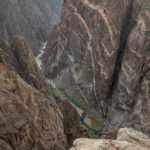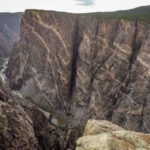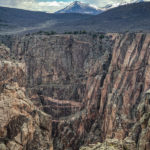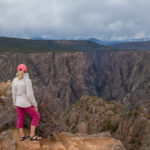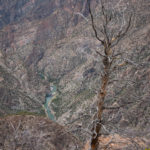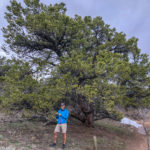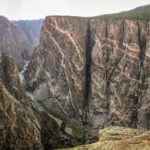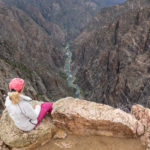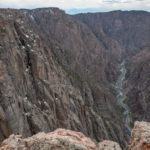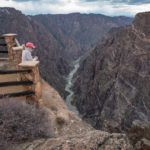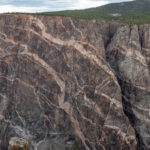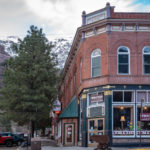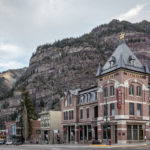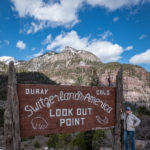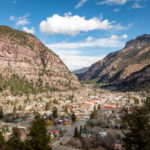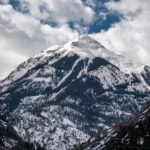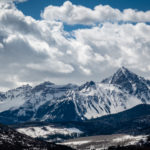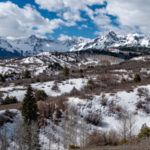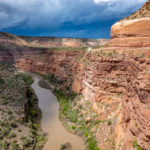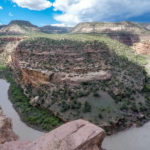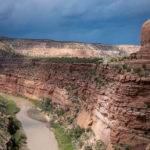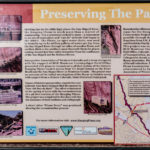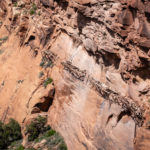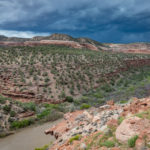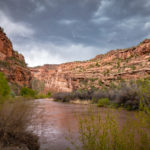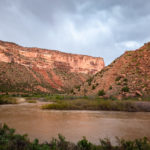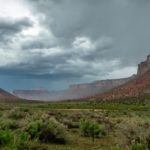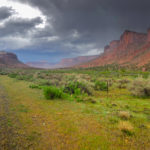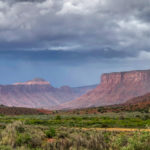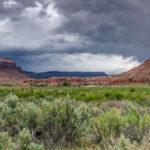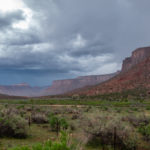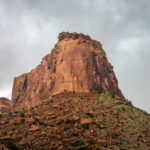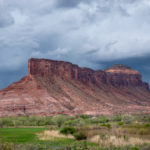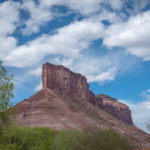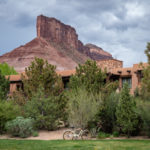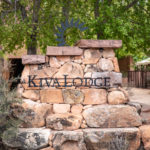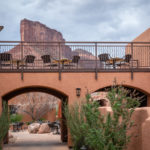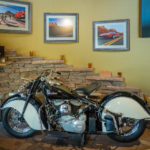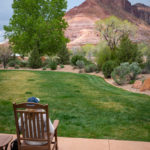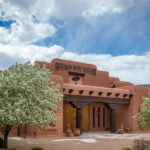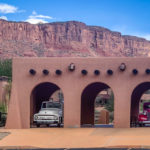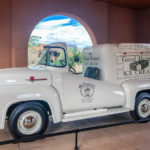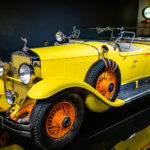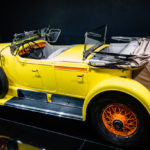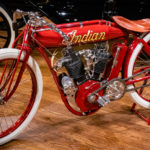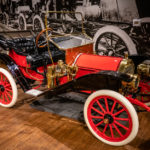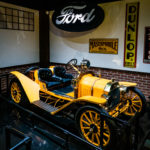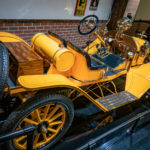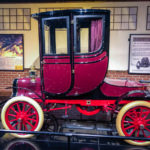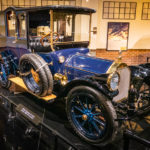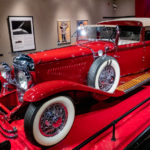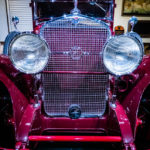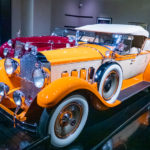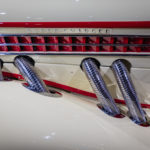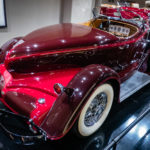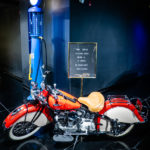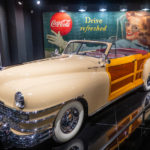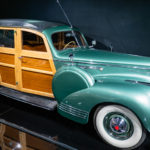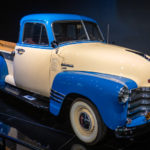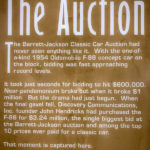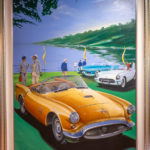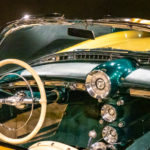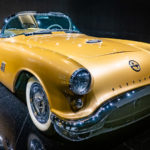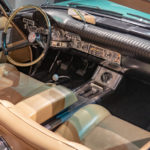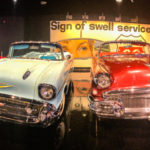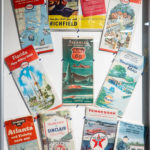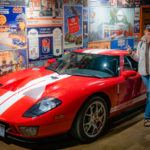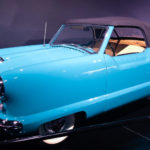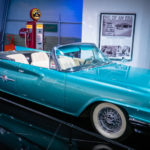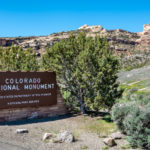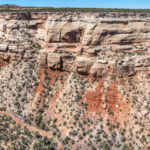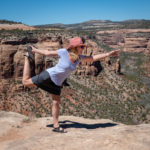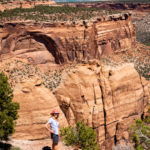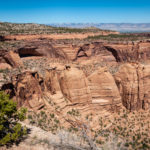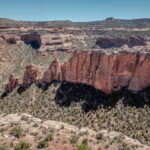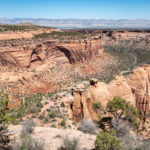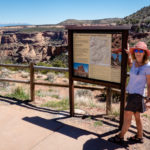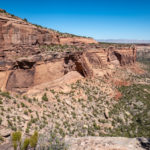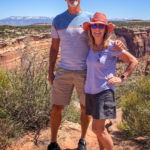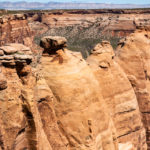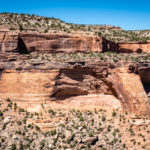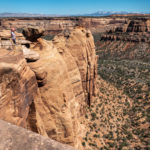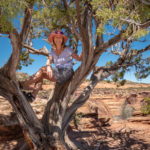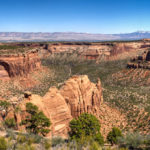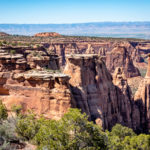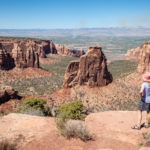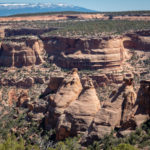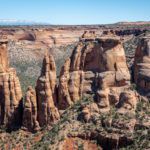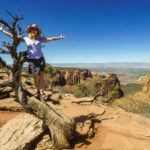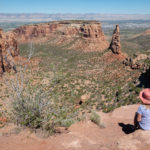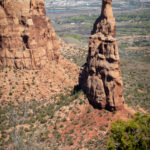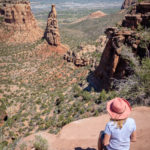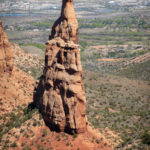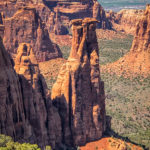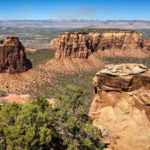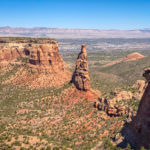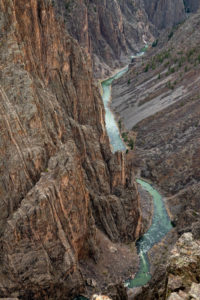
We left Cedar City, Utah, on April 18th and drove to Grand Junction, Colorado, the drive through the mountains along Highway 70 was really beautiful. We checked into the Junction West RV Park for a week. Our first sight to explore was the Black Canyon of the Gunnison National Park, where we saw the steepest cliffs, oldest rocks, and the craggiest spires in North America. The Black Canyon is so named because its steepness makes it difficult for sunlight to penetrate into its depth, and parts of the gorge only receive 33 minutes of sunlight a day. At its narrowest point the canyon is only 40ft wide at the river. However, we were there on a cloudy day so it was mostly grey in color from deep in the gorge to the sky above. The Black Canyon was officially discovered by Captain John Williams Gunnison in 1853, who was leading an expedition to survey a route from Saint Louis to San Francisco. He was killed by the Ute Indians later that year, and the river they named the Grand was renamed in his honor. In 1881, William Jackson Palmer’s DENVER and RIO GRANDE Railroad, (a narrow 3′ gauge rail line) had reached Gunnison from Denver to provide a link to the burgeoning gold and silver mines. And on August 13,1882, the first passenger train passed through the Black Canyon and continued service until the route was finally abandoned in the early 1950s.
“Such a feat of railroad engineering probably can not be found in the world”.
The Black Canyon of the Gunnison was established as a National Monument on March 2, 1933, and was redesignated a National Park on October 21,1999. The CCC built the North Rim Road from 1933-35, for 5 miles with five Overlooks. We explored all of these Overlooks, marveling at the grandeur and magnificence of this canyon, with views of the narrow gorge and walls of granite rising in some places to a height of thousands of feet. The Gunnison River is primarily responsible for carving the canyon, and set its course 15 million years ago cutting through the softer volcanic deposits reaching the Precambrian rocks of the Gunnison Uplift. It drops an average of 34 feet per mile through the entire Canyon, making it the 5th steepest mountain descent in North America. The greatest descent of the Gunnison River occurs at Chasm View dropping 240 feet per mile. We were in awe of the spectacular Painted Wall, the tallest sheer cliff in Colorado at 2,250 feet, and the lighter-colored pegmatite dikes are clearly visible crosscutting through the sheer cliff wall. Nature’s own palette of contrasting color on the steep, sheer, cliff wall across the gorge was a magnificent sight to see. This National Park is a must visit, and should be on everyone’s bucket list. Click on thumbnail to view images
Black Canyon of the Gunnison NP
Unaweep/Tabeguache Scenic Byway,
Drive from Ouray to Gateway, Colorado
The highlight of our time in Colorado was a one night’s stay at the historic Hotel Ouray, built in 1893, in Victorian architecture, when the mining and glory days were at an all time high. Ouray was originally established by miners chasing silver and gold, arriving in the area in 1875. At the height of the mining, Ouray had more than 30 active mines, and by 1877 the population was over 1,000, (in the 2010 census, there were 1,000 people!!). The Denver & Rio Grande Railway arrived in Ouray on December 21,1887, and declined with the coming of the automobile and trucks. Finally the line between Ouray and Ridgeway was abandoned on March 21, 1953. The next day, after exploring the town and stopping to take photos at the Overlook of Ouray, called the “Switzerland on America”, we headed for the scenic byway, called Unaweep/Tabeguache Scenic Byway to Gateway, Colorado. We drove along scenic highway SH 141 that runs inside Unaweep Canyon between Whitewater and Gateway.
We stopped at an overlook to view the Hanging Flume, an open water chute (known as a flume) built over the Dolores River Canyon, in the 1880s. Built by the Montrose Placer Mining Company to facilitate gold mining, and some of the sections of the flume still remain attached to the canyon wall. Construction of the Hanging Flume took 3 years, beginning in 1887. It used 1.8 million board feet of lumber, at a cost of $100,000, for approximately 12 miles long and up to 75 feet above the River. The actual wooden Flume was 6 feet wide and 4 feet deep. When in use, it conveyed 80,000,000 gallons of water each day. Sadly, the flume was only used for three years before being abandoned, because the mine itself was closed. What an interesting piece of history we came upon while driving along this Scenic Byway. We continued to wind our way northwest along the Dolores to Gateway. Arriving at the Gateway Canyons Resort & Spa for lunch, it is an award-winning destination located in the secluded Unaweep Canyon of Western Colorado, surrounded by the Uncompahgre Plateau, Pinon Mesa and La Sal Mountains. Click on thumbnail to view images
Gateway Colorado Automobile Museum
Gateway is home to the Gateway Canyons Resort and world-class Auto Museum. Established by Discovery Channel founder John S Hendricks. We stopped for lunch at the Resort, and explored the Auto Museum…. fantastic vintage car collection. The Gateway Auto Museum explores the marvels of American automotive history from the 1906 Cadillac Model H Coupe to the historic NASCAR Chevrolet raced by driver Jimmie Johnson. It is home to the one and only F-88 1954 Oldsmobile Concept Car. We did a self-guided tour of the Museum beginning with a video featuring the legendary Walter Cronkite (our iconic news broadcaster) speaking on the American Automobile and its place in society. We first saw the 1906 Cadillac and read about the company: “The Cadillac Automobile Company was founded from the remains of the Henry Ford Company in 1902 by Henry Martyn Leland. The new car was named after the French explorer, La Sieur Antoine de la Mothe Cadillac, who discovered Detroit in the early 18th Century.” Another great car was the 1930 Duesenberg Model J Transformable Cabriolet, the epitome of classic American luxury. And the 1947 Chrysler Town & Country convertible was one of 3,136 built that year. One of the first postwar cars to achieve true collector status, and remains among the most desirable “woodies” ever built.
The Museum features nearly 60 of the most prized and impeccably preserved historic cars in the country displayed in this unique gallery setting. We saw and examined each car and took many photos, however, I will not write about each one, instead you will need to go and explore it on your own some day. Definitely a site worth visiting especially if you are an antique car fanatic. Click on thumbnail to view images
Colorado National Monument
Today we visited Colorado National Monument, named after the river rather than the state, The Monument as it is called by the locals, is located near Grand Junction. This area was first explored by John Otto in the early 20th century. Later the area was established as Colorado National Monument on May 24, 1911, and Otto was hired as the first Park Ranger. The Park became more well known in the 1980s because of the Coors Classic bike race called the “Tour of the Moon”, on the Rim Rock Drive, built in 1931. We drove along the 23-mile Rim Rock Drive, following the upper rim of a series of canyons, stopping at the Overlooks to view the spectacular sheer-walled canyons cut deep into sandstone and granite rock formations. First stop was the Book Cliffs Viewpoint seeing the orange/brown layered cliffs as well as pinnacles and other eroded rock formations. The Monument’s feature attraction is Monument Canyon where we stopped to view the impressive rock formations such as Independence Monument, the Kissing Couple, and Coke Ovens.
The signature formation of the Colorado National Monument is a free standing tower of soft, red sandstone, called Independence Monument and soars 450 feet above the floor of the monument canyon. John Otto made the first ascent of Independence Monument in 1911, and he continued this feat every 4th of July to plant the American flag at the top. This tradition is still carried out today. In the distance we could see the Grand Mesa, the largest flat-top mountain in the world. It has an area of 500 square miles and stretches for about 40 miles east of Grand Junction between the Colorado River and the Gunnison River. The Mesa rises about 6,000 feet above the surrounding river valleys, reaching an elevation of about 11,000 feet. This Park is well worth your time and we would love to return and do some of the wonderful hikes it has to offer. This Park should be designated a National Park and maybe one of these days it will become one. Click on thumbnail to view images


